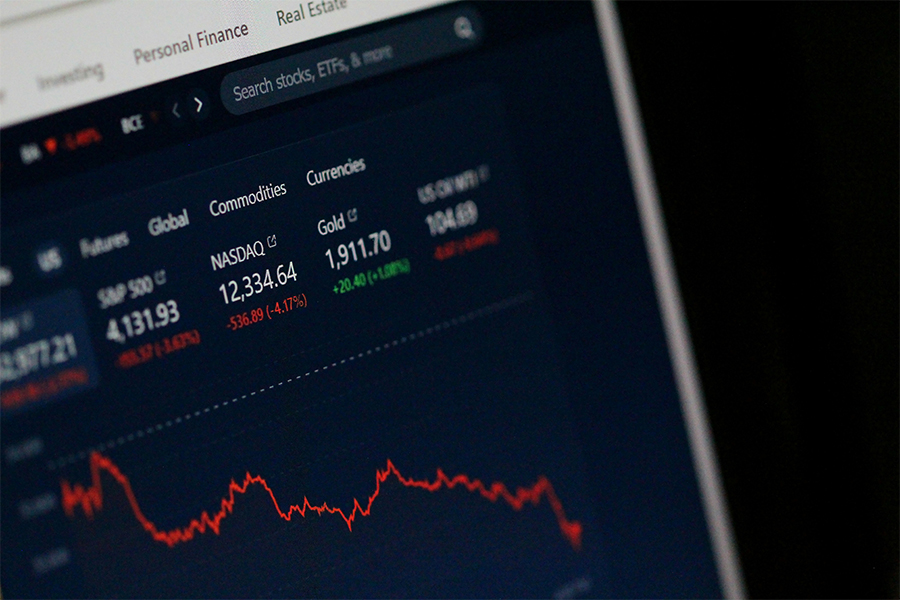Photo credit: Anne Nygard via Unsplash
Destiny Family Office specializes in helping high-net-worth collectors understand, account for, and protect the financial might of their collections, both for themselves and their families. Here, we discuss the many challenges that heirs of high-net-worth collectors may face upon inheriting a collection.
If you have a valuable collection you’d like to include in your financial, tax and estate planning in an effort to prevent those challenges, contact our Destiny Family Office team today. And don’t forget to self-assess your planning to date by completing our Collectibles Scorecard.
Back-of-the-envelope math can be startling.
For instance, perhaps you thought your collection was a trivial piece of your net worth. You never treated your collection as an investment. Or even considered its financial value. Instead, you paid a price for each piece, diligently assembling a meaningful array of treasures with little attention to their accumulating and appreciating aggregate value.
When you start to do the math, you arrive at a startling realization: your collection is worth much more than you thought. It now comprises a significant portion of your net worth, rivaling some traditional asset classes in allocation.
In isolation, a large collection may not be a problem, but ignorance of the allocation and hesitation to formulate a better understanding present significant undue risk.
Collectors can take some simple steps to analyze their collectible allocation, assess its fit with their overall risk tolerance and goals, and consider what adjustments to their portfolio might be required.
Develop an accurate understanding of your collection’s value and its size relative to your net worth.
The first step is an obvious one.
It’s time to clearly and accurately understand the total valuation of your collection. Only then can you assess its potential impact on your balance sheet and the associated risks and opportunities. While you might feel well equipped to conduct a thorough analysis of the items in your collection and their valuation, it may be time to consider a professional appraisal to ensure personal biases are removed and accuracy is attained. Appraisals can be useful for other purposes as well, particularly if you’re going to consider insuring your collection, so it’s a worthwhile step.
With this information, you can assess your collection in the context of your balance sheet and portfolio to understand its proportional size. Every person is different, but generally, if your collection comprises a low-single-digit percentage of your net worth, you may be less likely to make significant adjustments to your financial habits and structure, as the downside is relatively modest. However, when that percentage delivers a surprise well into double-digit territory, the urgency to act heightens considerably.
Now the introspection and work begin.
Determine how you view your collection in terms of risk.
Data that can tell us more about the risk or volatility in certain collectible categories remains emergent. While the fine art world is making significant strides on that front and others are following suit, it’s still a work in progress. Additionally, available data may not be relevant to your particular category or your eclectic collection. That being the case, there’s a need for introspection and an understanding of how your market of choice fluctuates.
Begin by understanding that most collections should likely be considered risk assets (learn more about the risks here). Put differently, thinking of them as stable and relatively secure assets like treasuries or other high-grade fixed income would be imprudent. In many collectible categories, valuations can fluctuate considerably in the short and long term. Through your passion, you’ve likely developed a solid understanding of what these fluctuations look like and how persistent they can be.
One question to ask yourself: in a worst-case scenario, what percentage of your collection’s value could be lost (purely due to market fluctuation) over your time horizon? With this number in mind, we can begin to assess how your collection fits on the risk spectrum of assets that you own.
Consider your intended time horizon for your collection or the items within it.
Just as in traditional investments, it’s important to consider your time horizon for your collection to assess the risk it presents to your financial well-being. If you intend to hold the items in your collection for a very long time – perhaps even until death – then you’re less likely to be concerned with short-term market fluctuations. The valuation of your favorite item tomorrow will mean very little to you, as you’re still enjoying it and have conviction that it will remain culturally relevant in the years and decades ahead.
If you were hoping to raise funds from your collection in the next few years for certain purposes (retirement, children’s education, healthcare, etc.), then the short-term fluctuations of the collection matter deeply. In that case, you may need to adjust the rest of your portfolio to adequately meet those liquidity or income needs and dampen the volatility your collection creates.
As we noted in our discussion of collectible investing risks, limited liquidity in collectible markets poses a significant challenge for collectors, particularly those with shorter time horizons. While these markets have grown more liquid, selling a collectible asset for cash – and realizing full value for it – is not an instantaneous pursuit. High-end assets often require weeks or months of marketing to achieve the best sales results. Even then, prices can vary considerably based on timing and the presence (or absence) of multiple motivated bidders. In times of distress, liquidity may be even harder to come by, as the pool of willing bidders shrinks.
Those liquidity challenges make a collector’s understanding of their time horizon all the more important.
Evaluate your overall tolerance for risk.
Time horizon is one factor that can inform an investor’s overall tolerance for risk. Some other factors shaping risk tolerance include liquidity needs, current and expected levels of income, overall level of wealth, and psychological appetite for risk. Psychological appetite may supersede other factors, as an emotional inability to stomach a 50% loss in portfolio value exists in isolation. Consider your reaction to such a loss and the sleepless nights it would or wouldn’t cause, and you’ll arrive at a clearer understanding of your risk appetite.
A very high tolerance for risk might include the following characteristics: a long time horizon, no significant liquidity needs (or satisfactory income to meet them), and an unflappable ability to endure sharp market drawdowns. People with that profile may not be motivated to adjust their portfolios to account for a risky and large allocation to collectibles. Conversely, those with a short time horizon and ongoing liquidity needs unsatisfied by current income levels can ill afford to take significant levels of risk that would jeopardize or erode their net worth in the near term. For such individuals, a large allocation to collectible assets may be imprudent, and a shift to more stable asset classes could better suit their current tolerance for risk.
Outline your financial goals.
Our financial goals are closely related to our risk tolerance. For those early in their careers and lives, capital appreciation and rapid growth may be the desired outcome for the foreseeable future. Those nearing retirement may instead wish to shift their focus toward capital preservation and a path to sustainable income. Financially successful people in life’s later stages may be weighing ambitions of continued growth for future generations against preservation, maintenance, and simplicity.
Collectors who desire continued financial growth must assess whether their collections still represent a strong growth source. If they retain conviction, their collections remain a fitting vehicle to achieve their goals, albeit with the understanding that they also introduce incremental risk. If their collection is large but secular tailwinds seem to be turning into headwinds, then it may be time to consider disposition. Similarly, if capital preservation or income are paramount goals, then collectors should determine if they feel their collection – especially in its current size – impedes progress towards them.
For collectors, it’s wise to consider collections within the context of overall financial goals. Some will have viewed their collections in a silo since their beginnings, having achieved comfortable wealth outside of it. Those collectors consider their collections a “bonus” and set goals that effectively ignore their existence. Others, though, will digest their collection’s value and realize that its size means ignoring it would be imprudent.
Adjust your allocation based on the above steps.
Several collection-related factors may lead a collector to adjust their portfolio allocations, and each collector may respond to these factors differently. But for many, it’s not hard to envision a scenario in which a collection is more sizable than thought and its size doesn’t align well with financial goals, risk tolerance, or time horizon.
In most cases, a collector will recognize that they are more vulnerable to risk than desired. That recognition may drive them to shift their traditional investment portfolio towards a more conservative stance or to downsize their collections to accommodate their risk profile. In other cases, a collector might find that their collection is well-sized and meshes well with their expertise and goals, requiring few adjustments. It’s similarly possible (though probably less common) that a collection could be smaller than expected relative to net worth and that previous, conservative steps to accommodate it can be shifted more aggressively for growth.
Whatever the situation, collectors should commit to taking stock of their collectibles allocation and conducting a thorough self-assessment of their financial profile. Only then can they gain greater clarity and comfort with their collection’s fit in their overall asset allocation.
Building a collection is a deeply personal pursuit. Even though financial outcomes may not have motivated its construction, achieving the right financial outcomes is just as personal a process.
Destiny Family Office specializes in helping high-net-worth collectors understand, account for, and protect the financial might of their collections, both for themselves and their families. Here, we discuss the many challenges that heirs of high-net-worth collectors may face upon inheriting a collection.
If you have a valuable collection you’d like to include in your financial, tax and estate planning, contact our Destiny Family Office team today. And don’t forget to self-assess your planning to date by completing our Collectibles Scorecard.




